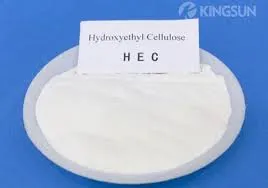
Dec . 21, 2024 07:32 Back to list
Understanding the Complete Form of HPMC and Its Applications in Various Industries
Understanding HPMC Full Form and Its Significance
Hydroxypropyl Methylcellulose (HPMC) is a cellulose derivative that has gained extensive recognition across various industries due to its unique properties and diverse applications. As a non-ionic, water-soluble polymer, HPMC serves as a vital component in numerous products, ranging from pharmaceuticals to food, construction, and personal care products. This article delves into the full form of HPMC, its properties, applications, and importance in different sectors.
What is HPMC?
HPMC stands for Hydroxypropyl Methylcellulose. It is produced by esterifying cellulose, a natural polymer derived from plant cell walls. The process involves substituting hydroxyl groups (-OH) in cellulose with hydroxypropyl and methyl groups, which enhances the solubility and functionality of the polymer. The result is a white, odorless powder that can dissolve in cold or hot water, forming a viscous gel-like solution.
Properties of HPMC
HPMC possesses several remarkable properties that make it stand out as a versatile polymer
1. Water Solubility One of its most significant characteristics is its ability to dissolve in water and form gels. This property is crucial in applications where thickening, stabilizing, or emulsifying agents are required.
2. Thermal Stability HPMC does not degrade at high temperatures, making it suitable for applications involving heat, such as in the preparation of hot sauces or soups in the food industry.
3. Biocompatibility With a non-toxic profile, HPMC is widely used in pharmaceutical applications, including drug formulations and coatings. It does not adversely affect the human body, which is vital for therapeutic products.
4. Adhesive Properties HPMC shows good adhesive qualities, making it an essential ingredient in construction materials and adhesives.
5. Film-Forming Ability The polymer can create flexible films, which is advantageous in various applications, including food packaging and coatings for tablets.
Applications of HPMC
hpmc full form

The diverse properties of HPMC lead to its utilization in multiple industries
1. Pharmaceuticals HPMC is commonly used as a binder in tablet formulations and as a thickening agent in liquid medicines. Its film-forming ability also makes it an ideal coating agent for tablets, providing controlled release of drugs.
2. Food Industry In the food sector, HPMC is employed as a thickening, stabilizing, and emulsifying agent. It enhances the texture of food products like sauces, dressings, and ice creams, providing a desirable mouthfeel without added calories.
3. Construction In construction, HPMC serves as an additive in cement and mortar, improving workability and water retention. It helps create strong, durable structures by enhancing the bonding capabilities of construction materials.
4. Personal Care Products HPMC is a common ingredient in personal care items such as shampoos, lotions, and creams. Its thickening properties improve the consistency of products, while its film-forming ability enhances the feel and performance of cosmetics.
5. Agriculture In agriculture, HPMC can be used in pesticide formulations and as a soil conditioner. Its ability to retain moisture makes it beneficial in enhancing the effectiveness of agricultural products.
The Importance of HPMC
The significance of HPMC lies in its multifunctional nature and non-toxic profile. As a biodegradable material, it aligns with the growing trend towards sustainability and environmental responsibility. Industries aiming to reduce their ecological footprint are increasingly turning to HPMC as a natural alternative to synthetic polymers.
Moreover, the demand for HPMC continues to rise, driven by advancements in technology and increasing awareness of health and safety standards. Research and development are ongoing to explore new applications for HPMC, particularly in biomedicine and novel drug delivery systems.
Conclusion
In summary, Hydroxypropyl Methylcellulose (HPMC) is a multifunctional polymer with a wide array of applications across several industries. Its properties such as water solubility, thermal stability, biocompatibility, adhesive qualities, and film-forming ability contribute to its versatility. As industries move towards sustainable practices, HPMC stands out as a safe and effective choice, promising to play a pivotal role in future innovations. Whether in pharmaceuticals, food, construction, or personal care, the impact of HPMC is undeniable and ever-growing.
-
Versatile Hpmc Uses in Different Industries
NewsJun.19,2025
-
Redispersible Powder's Role in Enhancing Durability of Construction Products
NewsJun.19,2025
-
Hydroxyethyl Cellulose Applications Driving Green Industrial Processes
NewsJun.19,2025
-
Exploring Different Redispersible Polymer Powder
NewsJun.19,2025
-
Choosing the Right Mortar Bonding Agent
NewsJun.19,2025
-
Applications and Significance of China Hpmc in Modern Industries
NewsJun.19,2025







